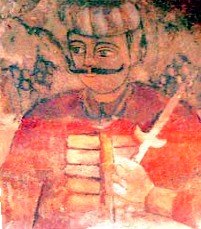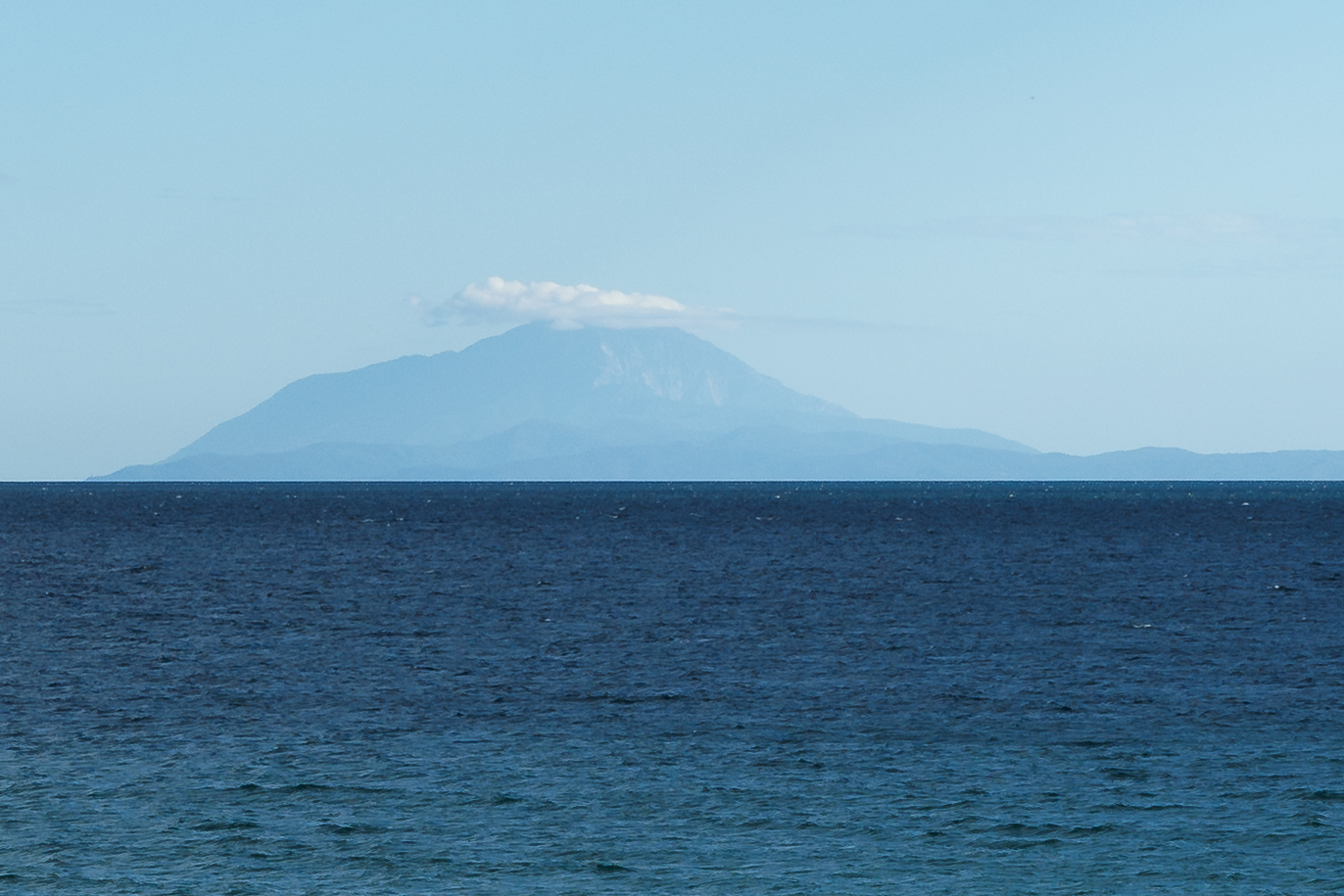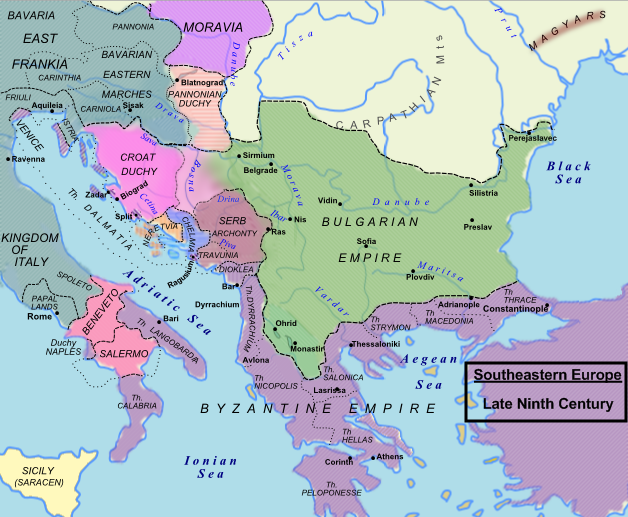|
Radu Mihnea
Radu Mihnea (1586 – 13 January 1626) was Voivode (Prince) of Wallachia between September 1601 and March 1602, and again between March and May 1611, September 1611 and August 1616, August 1620 and August 1623, and Voivode (Prince) of Moldavia in 1616–1619, 1623–1626. He was the illegitimate son of Mihnea Turcitul by Voica Bratcul. Modern-style prince & Family Man Radu Mihnea spent part of his early years in Koper (Capodistria), on Mount Athos and in Greece. His stay in the Serenissima accounts for the pro-Venetian character of his rule, and his interest in reforming the institutions of Wallachia and Moldavia. After completing his studies in Istanbul, Radu became prince of Wallachia at a very important time in Romanian history: following the union of the three principalities of Wallachia, Moldavia, and Transylvania under Michael the Brave. Radu would rule no less than four times in Wallachia and twice in Moldavia. He was loved due to his Renaissance-style and love of the ... [...More Info...] [...Related Items...] OR: [Wikipedia] [Google] [Baidu] |
List Of Rulers Of Wallachia
This is a list of rulers of Wallachia, from the first mention of a medieval polity situated between the Southern Carpathians and the Danube until the union with Moldavia in 1859, which led to the creation of Romania. Notes Dynastic rule is hard to ascribe, given the loose traditional definition of the ruling family. On principle, princes were chosen from any family branch, including a previous ruler's bastard sons, being defined as ''os de domn'', "of Voivode marrow", or as having ''heregie'', "heredity" (from the Latin ''hereditas''); the institutions charged with the election, dominated by the boyars, had fluctuating degrees of influence. The system itself was challenged by usurpers, and became obsolete with the Phanariote epoch, when rulers were appointed by the Ottoman Sultans; between 1821 and 1878 (the date of Romania's independence), various systems combining election and appointment were put in practice. Wallachian rulers, like the Moldavian rulers, bore the titles of ... [...More Info...] [...Related Items...] OR: [Wikipedia] [Google] [Baidu] |
Mihnea Voda
Mihnea is a Romanian-language masculine given name that may refer to: * Mihnea cel Rău * Mihnea Turcitul *Mihnea III * Mihnea Chioveanu * Mihnea Motoc *Mihnea-Ion Năstase *Mihnea Popa Mihnea Popa (born 11 August 1973) is a Romanian-American mathematician at Harvard University, specializing in algebraic geometry. He is known for his work on complex birational geometry, Hodge theory, abelian varieties, and vector bundles. Ac ... {{disambiguation Romanian masculine given names ... [...More Info...] [...Related Items...] OR: [Wikipedia] [Google] [Baidu] |
Vlad III Dracula
Vlad III, commonly known as Vlad the Impaler ( ro, Vlad Țepeș ) or Vlad Dracula (; ro, Vlad Drăculea ; 1428/311476/77), was Voivode of Wallachia three times between 1448 and his death in 1476/77. He is often considered one of the most important rulers in Wallachian history and a national hero of Romania. He was the second son of Vlad Dracul, who became the ruler of Wallachia in 1436. Vlad and his younger brother, Radu the Handsome, Radu, were held as hostages in the Ottoman Empire in 1442 to secure their father's loyalty. Vlad's eldest brother Mircea II of Wallachia, Mircea and their father were murdered after John Hunyadi, regent-governor of Hungary, invaded Wallachia in 1447. Hunyadi installed Vlad's second cousin, Vladislav II of Wallachia, VladislavII, as the new voivode. Hunyadi launched a military campaign against the Ottomans in the autumn of 1448, and Vladislav accompanied him. Vlad broke into Wallachia with Ottoman support in October, but Vladislav returned and Vl ... [...More Info...] [...Related Items...] OR: [Wikipedia] [Google] [Baidu] |
Michael The Brave
Michael the Brave ( ro, Mihai Viteazul or ; 1558 – 9 August 1601), born as Mihai Pătrașcu, was the Prince of Wallachia (as Michael II, 1593 – 1601), Prince of Moldavia (1600) and ''de facto'' ruler of Transylvania (1599 – 1600). He is considered one of Romania's greatest national heroes. Since the 19th century, Michael the Brave has been regarded by Romanian nationalists as a symbol of Romanian unity, as his reign marked the first time all principalities inhabited by Romanians were under the same ruler. His rule over Wallachia began in the autumn of 1593. Two years later, war with the Ottomans began, a conflict in which the Prince fought the Battle of Călugăreni, resulting in a victory against an army nearly three times the size of the army of Michael the Brave, considered one of the most important battles of his reign. Although the Wallachians emerged victorious from the battle, Michael was forced to retreat with his troops and wait for aid from his allies, ... [...More Info...] [...Related Items...] OR: [Wikipedia] [Google] [Baidu] |
Republic Of Venice
The Republic of Venice ( vec, Repùblega de Venèsia) or Venetian Republic ( vec, Repùblega Vèneta, links=no), traditionally known as La Serenissima ( en, Most Serene Republic of Venice, italics=yes; vec, Serenìsima Repùblega de Venèsia, links=no), was a sovereign state and maritime republic in parts of present-day Italy (mainly northeastern Italy) that existed for 1100 years from AD 697 until AD 1797. Centered on the lagoon communities of the prosperous city of Venice, it incorporated numerous overseas possessions in modern Croatia, Slovenia, Montenegro, Greece, Albania and Cyprus. The republic grew into a trading power during the Middle Ages and strengthened this position during the Renaissance. Citizens spoke the still-surviving Venetian language, although publishing in (Florentine) Italian became the norm during the Renaissance. In its early years, it prospered on the salt trade. In subsequent centuries, the city state established a thalassocracy. It dominat ... [...More Info...] [...Related Items...] OR: [Wikipedia] [Google] [Baidu] |
Mount Athos
Mount Athos (; el, Ἄθως, ) is a mountain in the distal part of the eponymous Athos peninsula and site of an important centre of Eastern Orthodox monasticism in northeastern Greece. The mountain along with the respective part of the peninsula have been governed as the monastic community of Mount Athos, an autonomous region within the Hellenic Republic, ecclesiastically under the direct jurisdiction of the Ecumenical Patriarch of Constantinople, while the remainder of the peninsula forms part of the Aristotelis municipality. Mount Athos has been inhabited since ancient times and is known for its long Christian presence and historical monastic traditions, which date back to at least AD 800 and the Byzantine era. Because of its long history of religious importance, the well-preserved agrarian architecture within the monasteries, and the preservation of the flora and fauna around the mountain, Mount Athos was inscribed on the UNESCO World Heritage List in 1988. In modern ... [...More Info...] [...Related Items...] OR: [Wikipedia] [Google] [Baidu] |
Koper
Koper (; it, Capodistria, hr, Kopar) is the fifth largest city in Slovenia. Located in the Istrian region in the southwestern part of the country, approximately five kilometres () south of the border with Italy and 20 kilometres () from Trieste, Koper is the largest coastal city in the country. It is bordered by the satellite towns of Izola and Ankaran. With a unique ecology and biodiversity, it is considered an important natural resource. The city's Port of Koper is Slovenia's only container port and a major contributor to the economy of the Municipality of Koper. The influence of the Port of Koper on tourism was one of the factors in Ankaran deciding to leave the municipality in a referendum in 2011 to establish its own municipality. The city is a destination for a number of Mediterranean cruising lines. Koper is the main urban centre of the Slovenian Istria, with a population of about 25,000. Aleš Bržan is the current mayor, serving since 2018. The city of Koper is offi ... [...More Info...] [...Related Items...] OR: [Wikipedia] [Google] [Baidu] |
Mihnea Turcitul
Mihnea II Turcitul ("Mihnea the Turned-Turk"; July 1564 – October 1601) was Prince ( Voivode) of Wallachia between September 1577 and July 1583, and again from April 1585 to May 1591. The only son of Alexandru II Mircea and Ecaterina Salvaresso, he ascended to the throne after events characteristic for the decline in prestige of local custom and princely power under pressure from the Ottoman Empire (Wallachia's suzerain): Mihnea had to compete with a foreign pretender, the Lombard physician Rosso, who claimed to be descended from a Wallachian ruler, and ultimately succeeded after enlisting the help of his grandmother, the influential Lady Chiajna. He, Ecaterina Salvaresso and Chiajna subsequently established what would become a highly unpopular rule, which followed the political guidelines imposed by Alexandru II, and saw a major increase in taxes — around 1583, the pressure was leading peasants to abandon their plots and flee to Transylvania in large numbers. ... [...More Info...] [...Related Items...] OR: [Wikipedia] [Google] [Baidu] |
Moldavia
Moldavia ( ro, Moldova, or , literally "The Country of Moldavia"; in Romanian Cyrillic: or ; chu, Землѧ Молдавскаѧ; el, Ἡγεμονία τῆς Μολδαβίας) is a historical region and former principality in Central and Eastern Europe, corresponding to the territory between the Eastern Carpathians and the Dniester River. An initially independent and later autonomous state, it existed from the 14th century to 1859, when it united with Wallachia () as the basis of the modern Romanian state; at various times, Moldavia included the regions of Bessarabia (with the Budjak), all of Bukovina and Hertsa. The region of Pokuttya was also part of it for a period of time. The western half of Moldavia is now part of Romania, the eastern side belongs to the Republic of Moldova, and the northern and southeastern parts are territories of Ukraine. Name and etymology The original and short-lived reference to the region was ''Bogdania'', after Bogdan I, th ... [...More Info...] [...Related Items...] OR: [Wikipedia] [Google] [Baidu] |
List Of Moldavian Rulers
This is a list of rulers of Moldavia, from the first mention of the medieval polity east of the Carpathians and until its disestablishment in 1862, when it united with Wallachia, the other Danubian Principality, to form the modern-day state of Romania. Notes Dynastic rule is hard to ascribe, given the loose traditional definition of the ruling family (on principle, princes were chosen from any branch, including a previous ruler's bastard sons – being defined as ''os de domn'' – "of domn marrow", or as having ''hereghie'' – "heredity" (from the Latin ''hereditas''); the institutions charged with the election, dominated by the boyars, had fluctuating degrees of influence). The system itself was challenged by usurpers, and became obsolete with the Phanariote epoch, when rulers were appointed by the Ottoman Sultans. Between 1821 and 1862, various systems combining election and appointment were put in practice. Moldavian rulers, like Wallachian and other Eastern European rule ... [...More Info...] [...Related Items...] OR: [Wikipedia] [Google] [Baidu] |
Wallachia
Wallachia or Walachia (; ro, Țara Românească, lit=The Romanian Land' or 'The Romanian Country, ; archaic: ', Romanian Cyrillic alphabet: ) is a historical and geographical region of Romania. It is situated north of the Lower Danube and south of the Southern Carpathians. Wallachia is traditionally divided into two sections, Muntenia (Greater Wallachia) and Oltenia (Lesser Wallachia). Dobruja could sometimes be considered a third section due to its proximity and brief rule over it. Wallachia as a whole is sometimes referred to as Muntenia through identification with the larger of the two traditional sections. Wallachia was founded as a principality in the early 14th century by Basarab I after a rebellion against Charles I of Hungary, although the first mention of the territory of Wallachia west of the river Olt dates to a charter given to the voivode Seneslau in 1246 by Béla IV of Hungary. In 1417, Wallachia was forced to accept the suzerainty of the Ottoman Emp ... [...More Info...] [...Related Items...] OR: [Wikipedia] [Google] [Baidu] |





